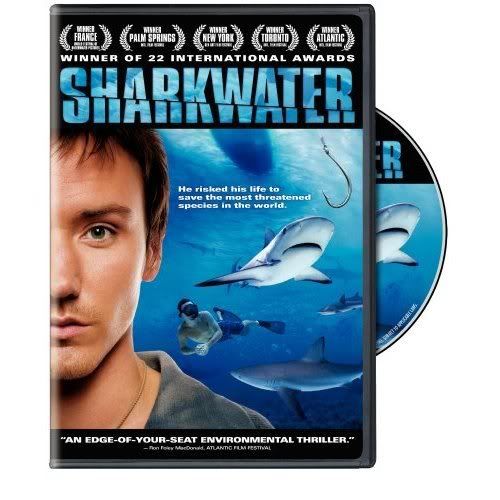Shark Evolution
![]()
The earliest known sharks were very different in appearance from their modern counterparts. Some looked more like eels than fish. Many of them had rounded snouts, rather than the pointed ones we associate with today’s sharks. They had smaller brains and their teeth were smooth, rather than the sharp-edged or serrated teeth typically seen in modern sharks. Their fins were less flexible and manoeuvrable, and it’s likely that ancient sharks were less agile than their modern cousins. But in some ways they were very similar to the animals we call sharks today, having the same cartilaginous skeletons, multiple gill slits and replaceable teeth.
Sharks are classified into eight orders, each according to common physical characteristics that group related species together. Although this seems simple, classifying sharks is not easy, because the actual characteristics used to define them are not always immediately obvious.
Some of the characteristics that are used to differentiate sharks include the number of gill slits, the number and type of fins, the presence of a membrane over the eye, the type of reproduction and even the structure of valves in the intestines. As a result, two species that look quite similar may be members of completely different orders, such as the mako shark and blue shark; while two others that look quite different can be members of the same order – dogfish and hammerheads, which both belong to the order Carchariniformes, are a good example of this.
Classifying sharks is so complicated that even experts cannot agree on precisely which species belong where. Some authorities put the frilled shark, of which there is only one known species, into a separate order, called the Chlamydoselachiformes. Meanwhile others assign a group known as the bramble sharks, whose two species most taxonomists place in the Squaliformes, to its own order called the Echinorhiniformes.
The eight most commonly recognised orders are:
- Heterodontiformes: Bullhead Sharks, containing a single genus and only 10 species including the Horn Shark.
- Orectolobiformes: Carpet Sharks. 34 species, including the Whale Shark, the Nurse Shark and the Zebra Shark.
- Lamniformes: Mackerel Sharks.16 species, including well-known sharks such as the Great White and the Mako.
- Carchariniformes: ground sharks. The most complex group with over 270 species, including Tigers, Hammerheads and Blacktip Reef Sharks.
- Hexanchiformes: cow sharks. Four species, with either six or seven gills.
- Squaliformes: Dogfish Sharks. About 115 species, including Dogfish, Catsharks and Lantern Sharks.
- Squatiniformes: Angel Sharks. About 18 species, all with a distinctive flattened body shape.
- Pristiophoriformes: Sawsharks. Eight species, all with distinctive saw-like snouts.
| The great diversity of sharks is reflected in their distribution around the world. Sharks have adapted to occupy every kind of saltwater ecosystem on every continent. They can be found in open oceans, coral lagoons, mangrove swamps, river estuaries and shallow seas. Some species of shark regularly frequent freshwater too, for example - the bull shark is known to travel over Many people assume that sharks are mostly confined to warm water. It is true that many well-known species of shark, such as the tiger shark, are best adapted for life in warm tropical seas - although tigers have been found in the icy waters of the north Atlantic off the coast of It’s easy to be misled by the popular image of the shark as a voracious predator. While it’s true that some species do attack and consume large prey, most sharks are adapted to eat other, more abundant local food sources. Ironically, the largest shark of all, the whale shark, lives almost exclusively on a diet of plankton and small fish, while hunters, like white sharks, eat everything from large fish to seals and even whale carcasses. In between these extremes, sharks are known to feed on everything from small crustaceans - such as crabs and lobsters - to squid, schooling fish, bottom-living molluscs and even sea-birds. Perhaps the most famously greedy and opportunistic of all is the tiger shark. All sorts of things have been found in the stomachs of the tiger shark, including vehicle licence plates, gasoline canisters, tyres, lengths of chain and other man-made objects as well as a galaxy of natural items, such as sea snakes, turtles and albatrosses. The decline in the number of sharks has serious consequences for the ecosystems in which they live. Sharks are a vital part of the food chain, and their predatory nature helps to keep populations of their prey species in check. Without sharks to help maintain a healthy balance, marine environments are at great risk of permanent damage. Like hundreds of other fish species, sharks are under increasing pressure from the global fishing industry. As stocks of edible fish decline all over the world, many fishing fleets are turning to sharks as an alternative food source, with potentially catastrophic effects, not just on shark populations, but on the marine ecosystem too. Shark populations take a long time to recover from overfishing. They grow very slowly and take a long time to reach sexual maturity – 20 years or more in some species. When they do reproduce, they produce very few offspring compared to other food fish species. These factors have already endangered several species of shark, particularly in coastal areas with large populations to feed, such as the North Atlantic coast of Sharks were forcibly and memorably dragged into the public eye in 1975 by Jaws, Steven Spielberg’s legendary film about a man-eating great white. Loosely based around a series of real-life shark attacks in Spielberg and his team built an amazingly lifelike mechanical shark (nicknamed Bruce) that was used for many of the film’s scenes, although much of the most memorable footage involved real white sharks filmed by divers from a cage. Subsequent attempts to depict sharks been less well received. 1999’s Deep Blue Sea - a film about a group of scientists who accidentally create a trio of super-intelligent man-eating sharks while researching a cure for Alzheimer’s disease - was altogether less riveting than Jaws and did little to improve the relationship between sharks and humans. One exception was 2003’s animated movie, Finding Nemo, in which Barry Humphries gave a memorable performance as a ferocious Australian shark trying to mend his predatory ways. The shark’s name? Bruce, of course. |
![]()
![]()



